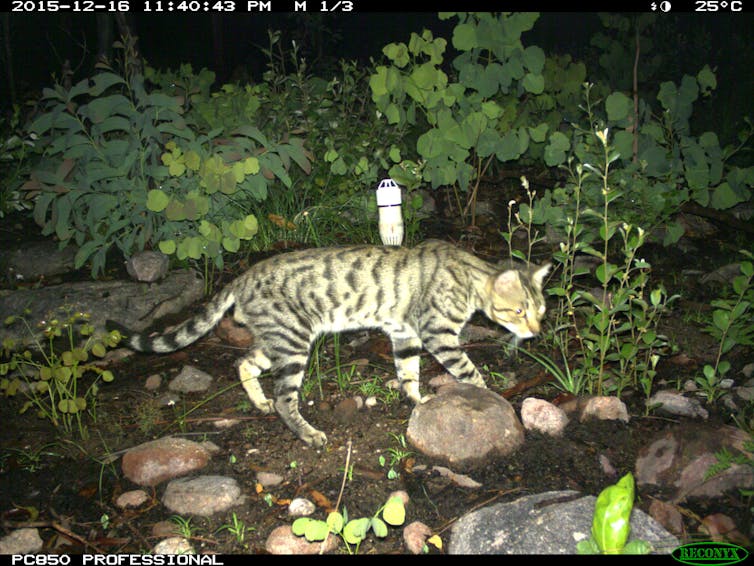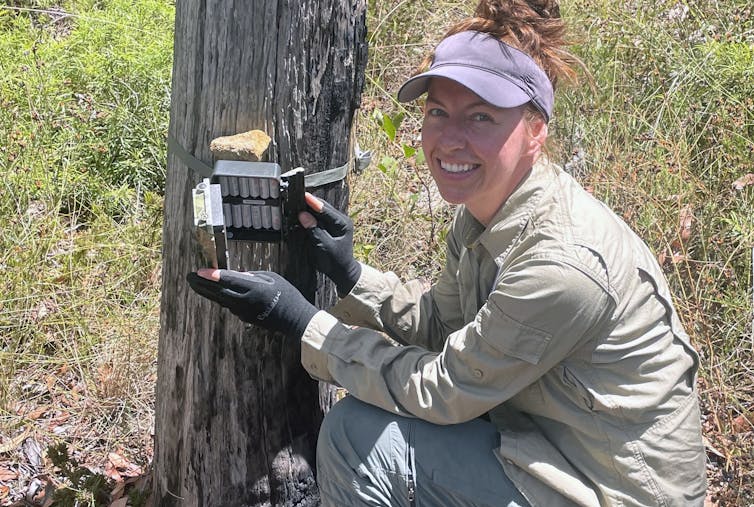Last week, the Albanese government introduced legislation to create a new statutory body called Environment Information Australia. The bill is due for debate in parliament today. The government clearly expects the bill will pass, because the new body has already been allocated A$54 million over four years in the May budget.
Why do we need it? Australia’s natural world is in steep decline – based on what we know. But there’s much we don’t know.
Australia has a fairly poor track record of effectively monitoring biodiversity. It’s hard to care for and restore nature if we don’t know how we are tracking, where to invest our efforts and into which activities.
The proposed agency will make environmental data more accessible by creating a platform where data from multiple sources can be pooled. These sources include: federal, state and territory governments, universities, research infrastructure platforms such as the Atlas of Living Australia and the Terrestrial Ecosystem Research Network, industry and citizen scientist data.
Increased access to relevant data would enable governments to better report on how well our environment is being managed.
The agency fills a gap in our environmental management regime. But by itself, it won’t improve outcomes for nature.
The most important actions needed to reduce Australia’s rapid losses of nature are the long-promised stronger environmental protection laws, which have been delayed indefinitely and a many-fold increase in funding for on-ground conservation programs.

Why do we need this?
In 2018, a national review of how Australia monitors its threatened species found 33% had never been monitored, while many others were only poorly monitored.
Without robust information, we can’t focus our efforts where there is most need. We need to know where threatened plants and animals are still surviving, whether their populations are rising or falling, and what threatens them.
While some of this data already exists, it is owned by hundreds of different organisations.

Many of these monitoring activities are already undertaken inside the federal environment department. But there are some notable steps forward in what is being proposed in the new legislation.
Firstly, efforts to increase the public sharing of data should be applauded.
One of the three objects of the proposed act is to “improve the availability and accessibility of high quality national environmental information and data,” though the detail is yet to be released.
Another good change is requiring the important State of the Environment snapshot reports to be produced every two years, rather than every five.
The legislation also mandates the production of comprehensive and ongoing national environmental economic accounts by law.
These accounts – also called “natural capital accounts” – are useful to track the health of different environmental assets at all scales, from the habitat of a single threatened species to the entire continent.
While this is a positive step, it could be better. As the laws stand, these accounts would be narrowly focused on describing the condition of the environment and its relationship with the economy.
Because environmental accounts are standardised and ongoing, they offer an ideal platform for measuring changes in environmental conditions. They could support a major expansion of our small set of useful environmental indicators, such as the Threatened Species Index.
Ideally we should have annual robust indices for a wide range of national environmental assets such as soil, water, plants, animals, ecosystems, and nature’s contribution to people at all scales.
Read more: Australia-first research reveals staggering loss of threatened plants over 20 years
Measuring progress against targets
One of the goals of the proposed agency will be to measure our progress toward becoming “nature positive”.
The nature positive concept has been embraced internationally. The goal is ambitious: halt biodiversity decline by 2030 against a 2020 baseline and achieve recovery by 2050.
Unfortunately, the government is proposing to embed a watered-down version of nature positive, leaving out the target dates and leaving the baseline open.
In response many Australian environmental scientists are urging the government to align with the international definition.
In November 2023, Environment Minister Tanya Plibersek talked proudly of the leading role Australia played in securing an ambitious Global Biodiversity Framework. This agreement has 23 targets which signatory nations have agreed to in an effort to stop the loss of species and nature.
To measure progress toward the target of protecting 30% of lands and seas by 2030, we will need data on what areas are protected, how they’re managed and which bioregions and plant communities they represent. That’s a job for the new agency.

Towards true nature positive development
Despite the recent deferral, the government has committed to reform our national environmental laws. These reforms need to include strong protections for habitat crucial to the survival and recovery of threatened species and ecological communities.
Here, too, the proposed agency should have a role, by modelling and mapping these critical habitats, which will help mark important areas as off limits to development. This could actually help accelerate building approvals by avoiding developers spending time on proposals unlikely to meet approvals.

If the agency is to be truly independent, as the government has promised, it will need to tackle tricky issues governments tend to shy away from, including a fully transparent account of environmental expenditures.
That covers not just the tiny amount the federal government spends on biodiversity protection, which languishes below 0.1% of total government spending, but total investment across all levels of government and different sectors.
If we want to tackle Australia’s biodiversity crisis we have to be absolutely clear about the problems we are seeking to solve and get the basics right.
Read more: Threatened species have declined 2% a year since 2000. Nature positive? Far from it.

